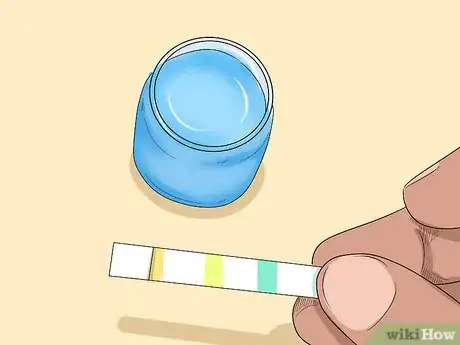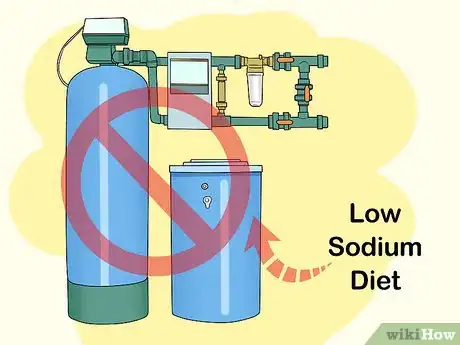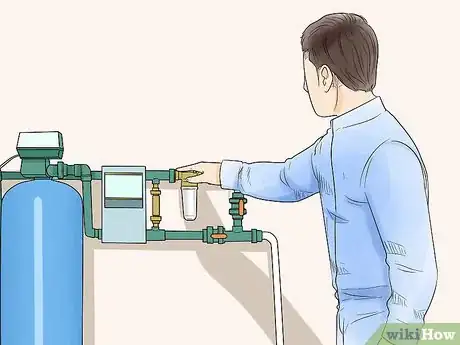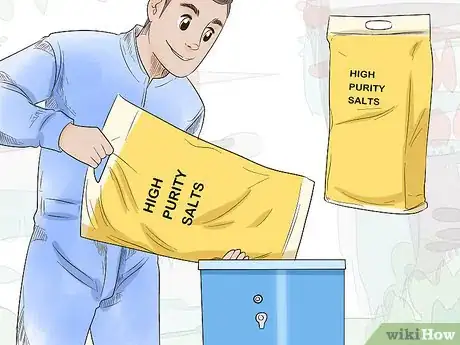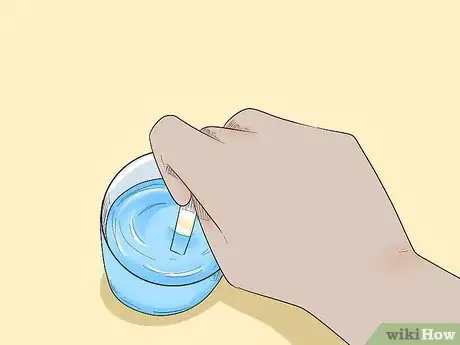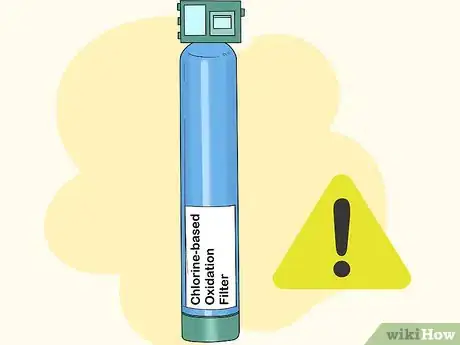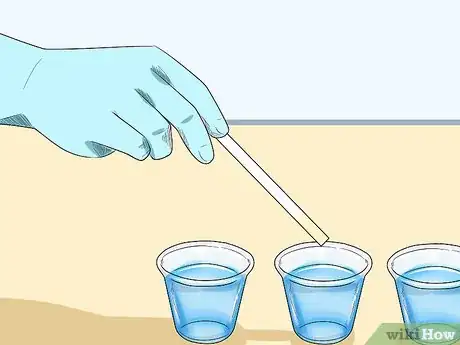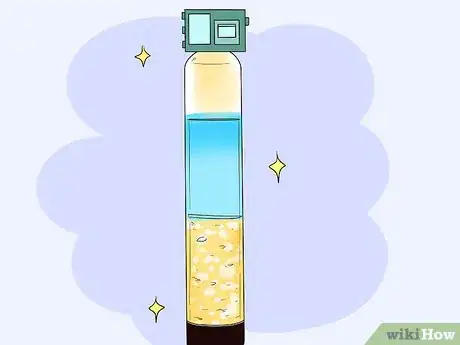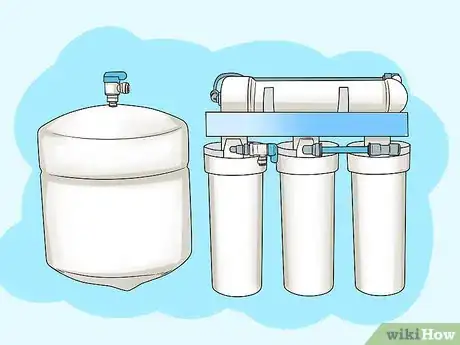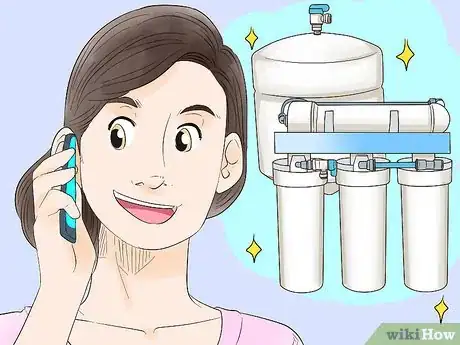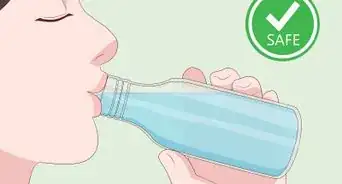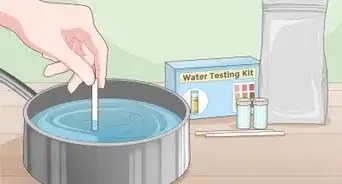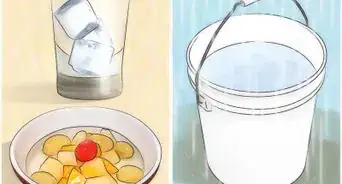This article was co-authored by wikiHow Staff. Our trained team of editors and researchers validate articles for accuracy and comprehensiveness. wikiHow's Content Management Team carefully monitors the work from our editorial staff to ensure that each article is backed by trusted research and meets our high quality standards.
This article has been viewed 126,166 times.
Learn more...
Besides hardness, high iron levels in water is the most common problem well owners deal with. With the right water filter, however, you can remove iron from your well water quickly and easily. Some filters, like water softeners, are ideal for removing mild traces of iron while others, like reverse osmosis filters, are better at removing many minerals and harmful substances. Choose the right filter for your well water to make it drinkable once again.
Steps
Getting a Water Softener System
-
1Test your well water to determine the best water purifying option. Before you determine how to filter your water, send a sample to a laboratory for testing. This will give you a better idea of what harmful minerals besides iron are in your water and help guide you when choosing a water purifying system.
-
2Choose a water softener exclusively for removing iron. Water softeners are generally equipped to replace iron with other minerals in water but may not remove more harmful minerals, like arsenic or sulfur. If you have tested your well water and found other minerals besides iron in it, another option might suit your needs better.[1]Advertisement
-
3Avoid water softeners if you are on a low sodium diet. Water softeners work by replacing iron minerals with sodium, and they require salt to work. If you cannot currently handle a high sodium diet, another iron removal method (like oxidation filtration or reverse osmosis) might be ideal.[2]
- Because sodium cannot be absorbed in significant quantities through the skin, using a water softener is safe for low-sodium diets for water that you wash or clean with.
-
4Install a water softener system yourself or call a professional. Every water softener system is different—some are simply attached to your well water pump or faucet and can be installed on your own. Others, however, may require professional help to install. Read your model's instructions and, if you are unsure how to properly install the system, call a plumber or the company you bought the system from for assistance.
-
5Use high-purity salts in your water softener. While purchasing water softener salt, look for high-purity options like evaporated or solar salt. These will leave less of a residue in your softener tank.
- Some water softener salts are made specifically for high iron concentrations. Check the label to find the right salt for your water.
-
6Test the well water again after installing a water softener system. After you have installed your water softener system, send another sample to a nearby laboratory for testing. Check for any harmful minerals remaining in the water that your softener system might not have filtered out.
- If significant levels of any harmful mineral remain, you may want to try a different filtration option.
Installing an Oxidation Filter
-
1Use oxidation filtration to get rid of iron and arsenic traces. Oxidation filters are generally stronger than water softeners and can remove harmful chemicals that are common to well water, specifically arsenic. If your well needs to be treated for arsenic and iron traces, choose an oxidation system to filter your water.[3]
- Oxidation filters can also get rid of "rotten egg" odors and flavors in water caused by hydrogen sulfide (sulfur).
- If you have not tested your well water for arsenic traces, it is recommended for all well owners to do so. High arsenic levels are common in private wells.
-
2Call a plumber or filtration company to install your oxidation filtration system. Research local companies that sell filtration systems and compare their prices for well or home filters. Choose the price that best fits your need and contact the company to install it. If you would prefer to install an oxidation filter yourself, find a product online or at a home supply store that is marked as easily-installable.
- If you buy an oxidation filter online, you may be able to call a plumber to help with installation.
-
3Handle chlorine-based oxidation filters carefully. Some oxidation filters require the usage of chlorine, a hazardous chemical. Read the filter's maintenance instructions carefully to avoid adding too much chlorine to your drinking water Never touch chlorine with your bare hands, and keep it out of reach from children or pets.
- Oxidation filters that use chlorine are better at disinfecting water than filters without chlorine.
-
4Get your well water tested after you have installed an oxidation filter. Send another water sample to a laboratory after installing your oxidation filter and compare its results to the well water's initial lab reading. If your oxidation filter does not seem to be filtering out all harmful minerals, you may need to try a different water purifying option.
-
5Maintain routine care of your oxidation filter. Clean your oxidation filter regularly according to the product instructions to keep it in the best possible condition. If you are concerned about its functioning at any time, send a water sample to a nearby laboratory to make sure it is functioning well.
Trying a Reverse Osmosis Filter
-
1Use a reverse osmosis filter to get rid of multiple mineral traces. Reverse osmosis filters can be helpful for getting rid of iron, manganese, salt, fluoride, and lead. If you have tested your well water and the results contained many different minerals alongside iron, reverse osmosis is likely the best option.[4]
-
2Avoid reverse osmosis if you want an environmentally-friendly filter. For every gallon (3.79 L) of treated water that reverse osmosis filters create, they create 7–9 gallons (26–34 l) of waste water. If you're trying to live a "greener" lifestyle, go for an oxidation filter or water softener instead.
-
3Install a reverse osmosis filter or have a professional install it for you. Like water softeners, every reverse osmosis filter is installed differently. In some cases, you may be able to install it on your own. Read the instruction manual carefully and, if you find yourself confused, contact a plumber or the company you bought the reverse osmosis filter from.
- Reverse osmosis filters can be bought online or at many home supply stores.
-
4Call a professional for routine maintenance every 1-2 years. Of all the well water filters available, reverse osmosis filters require the least upkeep. As long as it is installed correctly, it shouldn't need upkeep beyond routine care every 1-2 years. Call a plumber or reverse osmosis filter installation company once a year for maintenance or if you notice a metallic, iron taste to your water again.
References
- ↑ https://www.uswatersystems.com/blog/2013/08/can-i-use-a-water-softner-to-remove-iron/
- ↑ http://www.popularmechanics.com/home/interior-projects/how-to/a150/1275126/
- ↑ https://cfpub.epa.gov/safewater/arsenic/arsenictradeshow/arsenic.cfm?action=Oxidation
- ↑ http://www.historyofwaterfilters.com/ro-distillation.html
- ↑ https://www.ncbi.nlm.nih.gov/pmc/articles/PMC3849398/
- ↑ http://www.historyofwaterfilters.com/reverse-osmosis-pc.html
About This Article
Before you decide how to filter the iron out of your well water, start by testing how much iron you have in it, and if there are any other harmful minerals that need filtering out. If you only have trace amounts of iron in your well water, install a water softener system, which replaces iron minerals with sodium. While some water softener systems require professional installation, others simply attach to your well water pump or faucet. After your system is in place, buy high-purity salts like evaporated or solar salt, which will leave less residue in your tank. Once everything is working, test your well water again to make sure the filtration is working properly. To learn how to install an oxidation filter to remove iron from well water, keep reading!
